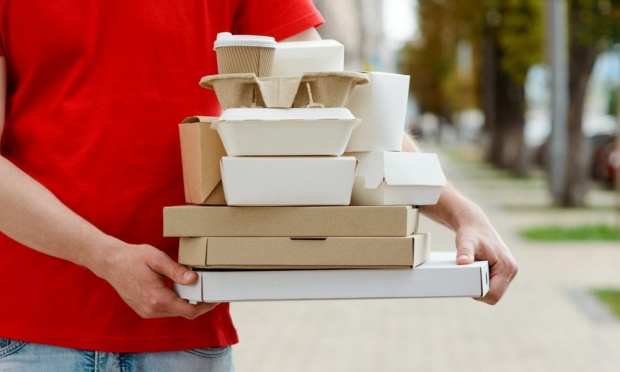QSRs Speed Ahead With Delivery — But The Road Remains Long

Nothing ruins an evening — or a morning, an afternoon or even an entire weekend day — than food delivery that gets it wrong. Perhaps that’s why, even in a society that is increasingly online and increasingly mobile-centric, a robust segment of the quick service restaurant (QSR) consumer base — 44.5 percent — prefers to place their orders with employees inside restaurants.
That’s according to the PYMNTS Restaurant Readiness Index. That finding would seem to serve as a dim view of the confidence that consumers have in QSRs to get it right. But another stat brings some optimism into the picture, and would seem to bode well for the future use of mobile technology by QSRs, including for deliveries: The Restaurant Readiness Index also found that 92 percent of customers consider using an app to place an order with a QSR as a positive experience.
Changing Model
The business of fast food — or merely “quick” food — is pretty simple and has remained unchanged for two or three generations. Hungry consumers show up at the specific location — sometimes getting out of their vehicles, sometimes employing the drive-thru — place an order, pay, receive their food and go about their days. But online and mobile technology is making its way into the QSR world, and many of those restaurants are employing digital to beef up their delivery capabilities — responding to consumer demand for more meals at home.
The PYMNTS research shows that drive-thru stands as the most popular ordering method among consumers after in-store ordering, cited by 25.6 percent of QSR customers. Such methods as QSR mobile apps (6.2 percent), QSR websites (4.8 percent) and third-party apps (0.7 percent) trail those two methods. “Notably, medium-sized chains lead the pack in more innovative — if less common — order pickup methods, such as delivery and curbside pickup,” the Restaurant Readiness Index says.
When it comes to QSR delivery — still a small segment of that world — 7.5 percent of those medium-sized operators offer it. That compares to 4 percent of small operations and 3.4 percent of large operations.
Yum Example
Yum! Brands stands as an example of a large QSR operator that is pushing ahead with delivery. Brands under the Yum umbrella include Pizza Hut, Taco Bell and KFC. During the company’s recent Q4 post-earnings conference call, executives made clear that Yum is putting much of its hopes on digital with its work involving online delivery food platform Grubhub.
The company last year announced it would buy a 3 percent stake in Grubhub, and that it was teaming up with the company to provide delivery from two of its brands — Taco Bell and KFC. Food delivery via third-party online ordering platforms, of course, is among the hottest trends in eCommerce, with major players — along with some smaller hopefuls — battling it out for market share, and to keep consumers and restaurant operators within particular ecosystems.
By 2020, Yum wants to have 70 percent of its restaurants offering delivery.
Delivery and Innovation
Delivery also promises to play an indirect role in QSR plans to invest in and deploy kitchen automation systems, or KAS, the PYMNTS research documents. KAS streamline the order-fulfillment process by, among other things, providing a kitchen display that shows orders on a mobile tablet or other device. The Restaurant Readiness Index found that the top reason for QSR investment in kitchen automation systems — cited by 37.4 percent — is because KAS can reduce the time for orders to get to customers. As more QSRs offer more deliveries — Yum’s Pizza Hut brand is among the leaders in KAS implementation — those systems will most likely prove vital to those efforts.
In fact, when it comes to general QSR innovation, all those digital and mobile investments and programs, delivery also plays a significant role there, the Restaurant Readiness Index shows. When asked to cite motivations for innovation, 37.5 percent of QSR managers mentioned eliminating delivery errors. That came in behind such reasons as boosting speed and improving customer experiences, but ahead of such factors as securing payment data and reducing the number of employees needed.
The basic QSR model remains mostly unchanged — the experience you have with fast and quick foods is generally the same as the experiences of your parents and grandparents. But technology is coming on quickly, and technology has a way of sparking other quick shifts. Delivery is sure to take on an increasing role in the world of QSRs in the coming years.
